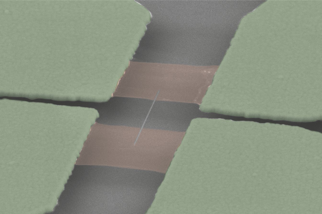Bachtold, Adrian

Date: Tuesday May 20, 2014
Time: 16:45
Place: ETH Zurich, Hönggerberg, HPF G 6
Host: Christian Degen
Mechanical resonators based on nanotubes and graphene
Adrian Bachtold
ICFO – The Institute of Photonic Sciences, Castelldefels (Barcelona), Spain
Carbon nanotubes and graphene offer unique scientific and technological opportunities as nanoelectromechanical systems (NEMS). Namely, they have allowed the fabrication of mechanical resonators that can be operable at ultra-high frequencies and that can feature high quality factors. In addition, nanotubes and graphene have exceptional electron transport properties, including ballistic conduction over long distances. Coupling the mechanical motion to electron transport in these remarkable materials is thus highly appealing. Here, I will review some of recent results on nanotube and graphene resonators, including mass sensing at the proton mass level [1], force sensing with ~10 zN/Hz1/2 noise [2], and strong mechanical nonlinearities that lead to exotic behaviors [3].
[1] J. Chaste, A. Eichler, J. Moser, G. Ceballos, R. Rurali, A. Bachtold, Nature Nanotechnology 7, 301 (2012)
[2] J. Moser, J. Güttinger, A. Eichler, M. J. Esplandiu, D. E. Liu, M. I. Dykman, A. Bachtold, Nature Nanotechnology 8, 493 (2013)
[3] A. Eichler, J. Moser, M.I. Dykman, A. Bachtold, Nature Communications 4, 2843 (2013)